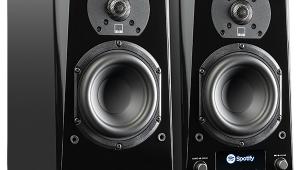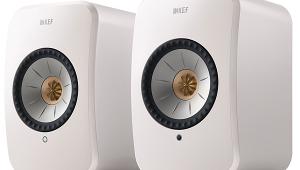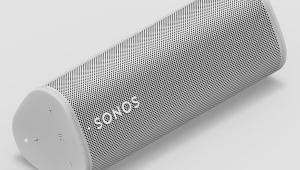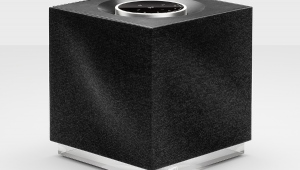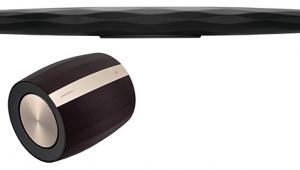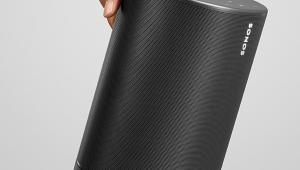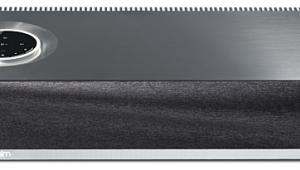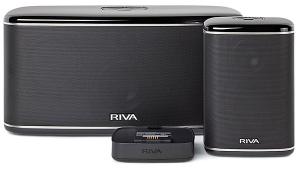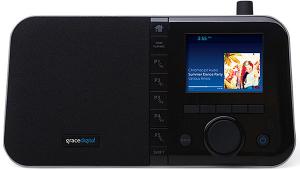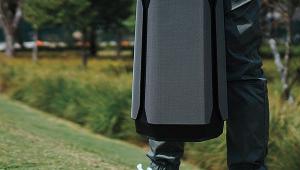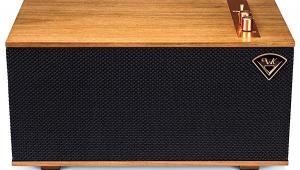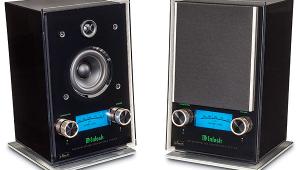Review: Altec Lansing inAir 5000 AirPlay Speaker

Altec Lansing is a name I hadn't heard in a while. I vaguely recall some cheap computer speakers I had, perhaps back in the 66 Mhz days (486DX2-66 FTW!). But I shall not prejudge, especially when the new inAir 5000 Wi-Fi speaker is an attractive piece of kit. Also because that's not what I'm paid for. Ok, "paid" but you get the idea.
Review Mode: Engage.
The inAir 5000 is an AirPlay-enabled Wi-Fi speaker, with two 1-inch tweeters, two 3-inch mid-ranges, and a 4-inch "subwoofer." In lieu of a port, it has a passive radiator. On the back you've got a USB input and Ethernet. The left side has 3.5mm input and output jacks for non-Apple analog in and headphone out.
I can think of a couple of uses for the inAir 5000. The first - and this made the most sense for my setup - is adding some sound reinforcement. I use an AppleTV to stream my iTunes content to my main audio system. In my adorably tiny house, my system is enough to get sound everywhere. However, high frequencies don't tend to go around corners well, so things can get a little muffled if you don't have a line of sight to the listening room. Adding the inAir 5000 in the kitchen, for example, adds just enough high-end to fill out the sound. So in effect I'm adding more speakers to a multi-room audio system. Or, I guess, adding a multi-room audio system.
The other application - and one I imagine will be far more popular - is using the inAir 5000 as a main speaker in a room, playing music from a central computer running iTunes. So I checked it out in this role as well, trying out a variety of placement options. As with any speaker, the inAir's sound changes depending on location, so I tested the 5000 on a tabletop, on a shelf, and on a stand, like a "regular" speaker.
Setup
Getting the inAir 5000 up and running was pretty easy, though there is a definite order to follow when turning on, plugging in, and starting the iOS app (check the manual). In fact, the hardest part was removing the protective plastic from the remote, which seems to be bonded at a molecular level to the brushed aluminum finish. If you want to use multiple AirPlay-enabled speakers, the inAir 5000 had no noticeable lag between it and my main computer speakers. So there's seamless sound between systems. This isn't always the case, and any lag can create odd echo effects and mess with your head if you move from one room to another.
One issue is when you first turn on - or re-connect to - the 5000, the speaker defaults to maximum volume. This is something I've found with other AirPlay devices too, so it's not 5000-specific. You need to set the initial volume level by reducing the setting in the "multiple speakers" menu in iTunes (the little square with arrow in the lower right). This goes against every fiber of my audiophile being (lower the signal level to lower the volume), but there don't seem to be any ill effects, so. . .
Performance
First, testing as a "real" speaker. Installing the inAir 5000 in my theater was easy, given that the only wire it requires is for power. I put it in the place of my center channel, fairly close to a wall but on a large stand. "Go Do" from Jónsi's (of Sigur Rós fame) 2010 album Go, was my first pick. Vocals were noticeably forward, and the mid-range in general seemed rather accentuated. The soundstage was fairly small, which isn't too surprising given the small cabinet.
The treble was only OK. It didn't sound very open, and at higher volumes it could get slightly harsh. The opening of "Maracas" by the Mates of State showed a bit of bite at certain higher frequencies, including a little more sibilance than I usually like.
The bass was better than I'd expected, though quite lumpy. For example, listening to "The Happiest Days Of Our Lives" from Pink Floyd's The Wall, I found the kick drum lacking any real "kick," but certain notes from Waters's bass would come through fairly strongly. I imagine some of this was thanks to boundary reinforcement (additional bass thanks to the proximity to the wall). To test that, I moved on to the kitchen.
With the inAir placed on my kitchen table, I repeated my selections, and found a drop off in the bass, as I'd expected from a more open location. Standing higher than the speaker, I found the treble to be a little more harsh than when I was seated in front of it.
Lastly, I moved to my office, and put it a bookshelf. Certainly not ideal placement, but I think it's a likely spot for a smallish Wi-Fi speaker. The additional boundary reinforcing did the 5000 no favors here, going too far into the boomy range. So if you get an inAir 5000, I recommend putting it near a wall, but not on a closed-in shelf.
Overall, I found the sound to be listenable, but too inconsistent across the frequency range for me to genuinely love it. It was never bad per se, but $500 can get you some pretty good audio these days, so there's a lot of competition.
- Log in or register to post comments
